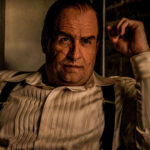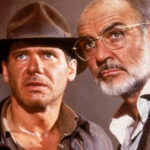

Since its release in 1985, “The Breakfast Club” has remained a cornerstone of teen cinema, influencing generations of viewers with its insightful narrative and deeply human characters. Directed by John Hughes, this iconic film has transcended its era, becoming a timeless cultural landmark. However, behind the scenes, a series of fascinating curiosities surround the production of this classic. From memorable improvisations to the unconventional casting choices, “The Breakfast Club” is a treasure trove of secrets and intriguing facts that unveil the magic behind the making of this beloved film. In this text, we will delve into these curiosities, exploring the backstage and the details that make “The Breakfast Club” a truly unique and enduring masterpiece.
1 – SCRIPT WRITTEN IN TWO DAYS
John Hughes managed to draft the film’s screenplay in a short span of time, dedicating only two days to this arduous task, between July 4th and 5th, 1982.
2 – IMPROVISATION
In the original script, the scene where the characters gather in a circle on the library floor to share the reasons for their punishments did not contain specified dialogue. The director allowed the actors to improvise and freely express what they wished during the scene.
3 – THE LIBRARY
The film’s production team constructed the library set inside the gymnasium of a deactivated school located in Rosemont.
4 – HOW THE TITLE WAS CREATED
The title “The Breakfast Club” was adopted from the name used for the school’s detention, known as “The Breakfast Club,” where a friend of John Hughes worked. The director chose to heed his friend’s advice and opted to use this name for the film.
5 – DAVID BOWIE QUOTE
Ally Sheedy suggested a David Bowie quote at the beginning of John Hughs’ film. Check out:
“These kids you spit on
As you try to change your worlds
They are immune to your queries
They are very aware of what they are going through”
The excerpt can be heard in the song “Changes” from the album “Hunky Dory” released in 1971.
6 – WHAT WAS EACH PARTICIPANT DETAINED FOR?
Do you know the reasons why each one was detained on Saturday?
Bender: set off a false fire alarm.
Brian: hid a flamethrower in his locker.
Andrew: taped a boy’s buttocks together in the locker room.
Claire: skipped classes to go shopping.
Allison: was the only one who didn’t commit anything, but she was present in detention because she had nothing more interesting to do that Saturday.
7 – NOT ALL THE ACTORS WERE TEENAGERS
Out of the five main characters, only Hall (Brian) and Ringwald (Claire) were young at that time, both being 17 years old. Estevez (Andrew) and Sheedy (Allison) were 23 years old, while Nelson (John) was 26 years old.
8 – JUDD NELSON ACTUALLY HAD A POCKETKNIFE
The pocketknife Judd Nelson used indeed belonged to the actor and was a personal defense tool he carried.
9 – CLAIRE AND ALLISON’S OUTFITS
John Hughes, the director and screenwriter of the film, rejected the initially proposed outfit for Claire’s character, leading the film’s production to acquire a complete ensemble from the only Ralph Lauren store in Chicago at that time. John’s reason was that the original outfit didn’t meet the level of sophistication necessary for the character.
A similar incident occurred with Allison’s wardrobe, where the production had to handcraft the costume as the actress wanted to wear something black, at a time when the 1980s were known as the “most colorful decade of all.”
10 – THE FILM WAS SHOT IN CHRONOLOGICAL ORDER
Often, a film isn’t shot in sequence with the story. It’s common for them to film the final scene first and then the beginning of the movie.
But in the case of THE BREAKFAST CLUB, all the scenes of the film were shot in chronological order, providing the actors with the opportunity to truly immerse themselves in their roles.
11 – THE ICONIC THEME SONG
Before becoming a hit with the band Simple Minds, the song “Don’t You (Forget about Me),” which closes the film, was initially offered to Billy Idol, but he turned down the opportunity.
12 – SEQUELS WERE CANCELLED
After the film’s worldwide success, several ideas were considered for sequels to be made every ten years, reuniting the entire cast. However, this never materialized due to the tense relationship between John Hughes and Judd Nelson.
13 – RICK MORANIS NEARLY JOINED THE FILM
Rick Moranis was originally slated to play the janitor before backing out of the role. Shortly after his success in 1984’s “Ghostbusters,” Moranis was considered a significant addition to the cast as part of the studio’s strategy.
14 – HIGH SCHOOL AND COLLEGE IN THE SAME YEAR
In the year that Ally Sheedy, Judd Nelson, and Emilio Estevez portrayed high school students in “The Breakfast Club,” they also depicted college characters in the film “St. Elmo’s Fire.”
15 – THE DIRECTOR’S DARLING
Molly Ringwald was Hughes’ protege during the 1980s. In addition to “The Breakfast Club,” she starred in “Sixteen Candles” (1984) and “Pretty in Pink” (1986).
In a 2018 article, the actress mentioned that some of Hughes’ films and scenes can be seen as sexist today. She even admitted to having managed to remove a scene from “The Breakfast Club” in which the gym teacher swam naked.
In conclusion, the behind-the-scenes trivia of the 1985 film “The Breakfast Club” offers a fascinating insight into the elements that contributed to its creation and enduring cultural impact. From the casting choices to the script and costume decisions, each detail reveals the dedication and care of those involved in the film’s production. Behind-the-scenes stories, such as Billy Idol’s refusal to record the theme song and the tensions between John Hughes and parts of the cast, add layers of complexity to the narrative behind the film. Additionally, Molly Ringwald’s observations about the contemporary perception of certain scenes as sexist highlight the evolution of discussions around representation and gender equality. Ultimately, “The Breakfast Club” is not just a striking portrait of 1980s youth but also a work that continues to inspire and provoke reflection decades after its release.








